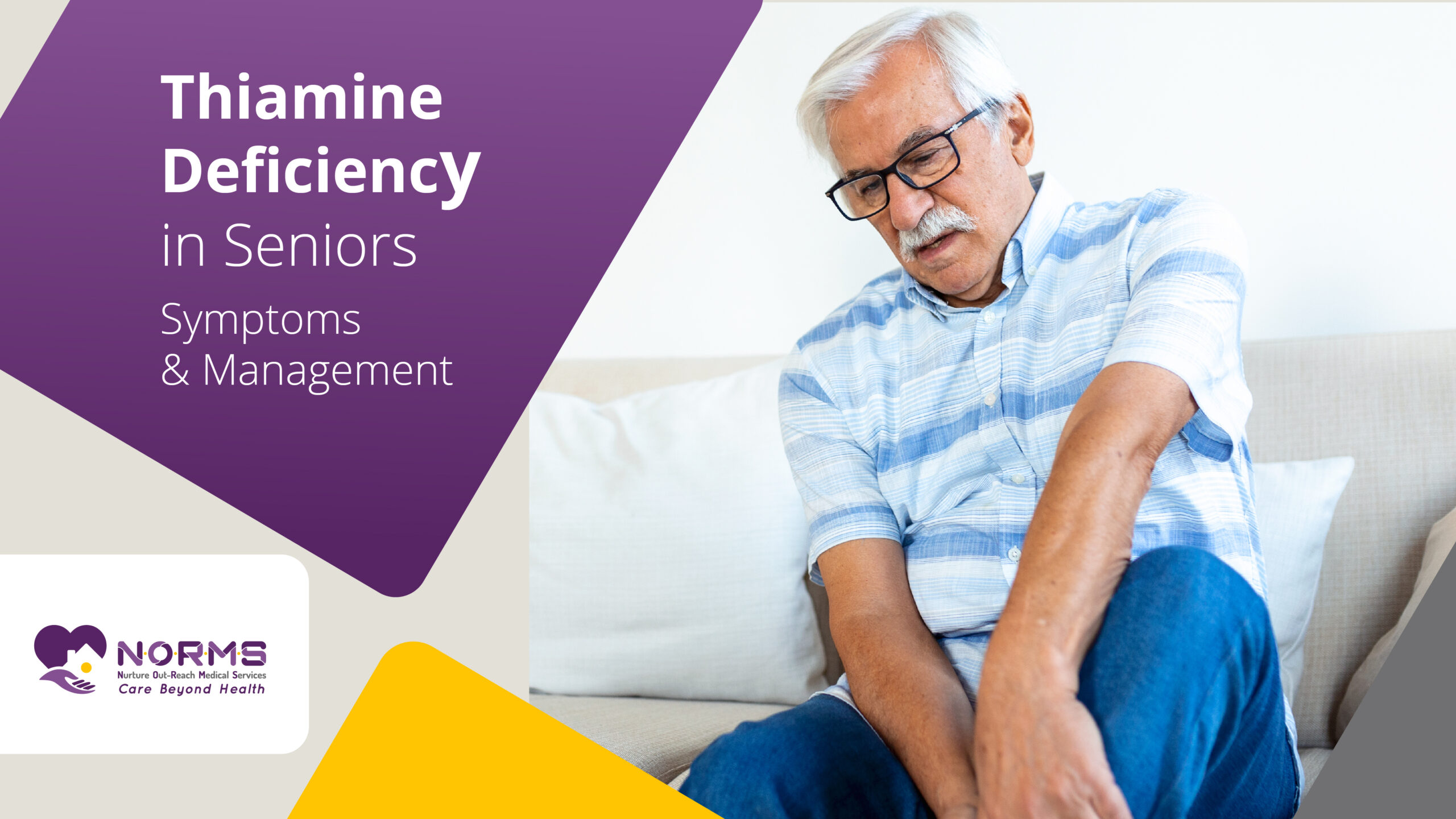
The issue of thiamine deficiency among older people is a serious health problem we do not usually notice. Thiamine or vitamin B1 is important for energy metabolism and nerve functions. During senior years, low dietary intake, absorption problems, and chronic pathology may cause such insufficiency. These may include physical symptoms such as tiredness, weakness, and neurologic problems. It is important to recognize the signs and ensure a balance diet and thiamine supplements in the elderly so as to enhance the total well-being of the older ones.
Vitamin B1 or thiamin is an important nutrient that is used in keeping optimal nerve and heart activities. Thiamin-intake is insufficient among elderly leading to thiamin deficiency. This deficiency may result from insufficient intake of nutrients, inadequate access to various types of foods or poor appetite.
In the elderly, chronic alcohol consumption is one of the major causes of thiamin deficiency. For instance, individuals who are frequent drinkers do put themselves in much higher risk due to the fact that alcohol interferes with thiamin absorption and utilization. This is especially important in relation to older adults, who might also be ex-alcoholics.
Some older ones can develop digestion problems, thus leading to malabsorption of this vitamin. Conditions such as Crohn’s disease celiac disease or other gastrointestinal complaints may interfere with the normal intake of necessary nutrients like thiamin.
Some of the common drugs prescribed to the elderly, including diuretics and certain antacids, negatively impact thiamin uptake. Therefore, healthcare providers need to look out for possible interactions as well as keep thiamin levels in check among people using these drugs.
Metabolic changes often result from aging which may impact on how the body breaks down and uses thiamin. Thiamin deficiency is caused by decreased absorption efficiency and increased excretion in the elderly.
Moreover, people suffering from chronic diseases like diabetes and kidney disease have high chances of developing thiamine deficiency. These conditions may affect thiamine metabolism, resulting in a high chance of thiamine deficiency.
Thiamin deficiencies are shown through a range of symptoms in senior citizens. Therefore, their vitamin intake levels should be monitored.
This condition has to be addressed immediately in order to promote general health. Here are key points outlining the treatment for thiamin deficiency in the elderly:
Thiamin supplementation remains the best method on treating thiamin deficiency. Oral thiamin supplements are usually administered in this regard as it allows for uniformity and adequacy of dosages.
The deficiency should be treated by encouraging a diet abundant with thiamin. These foods include whole grains, legumes, nuts, seeds, and enriched cereal. A balanced diet can, therefore, play a crucial role in bringing up thiamin levels.
Where oral supplementation is unavailable or patients experience severe cases, however, intravenous thiamin may be advised. Moreover, this processhelps quicker assimilation and fast distribution of thiamin into the blood stream.
Monitoring thiamin level becomes necessary to gauge the efficacy of therapy. Afterwards, healthcare professionals will check on the normalcy of the thiamin concentration in an individual’s body.
Therefore, pinpointing and overcoming thiamin shortage has a crucial significance towards avoiding re-occurrences of the disorder. This could also entail handling instances such as alcohol abuse, gastro-intestinal problems, or other causes of the deficiency.
Incorporating collaborative efforts with healthcare professionals involved in dietetics, nutrition, and geriatrics is necessary to provide total interventions for thiamin deficiency care. This ensures a holistic approach to health by accounting for all relevant factors.
When providing treatment for thiamin deficiency, apart from addressing the condition itself, health care specialists may also suggest medications or therapists for some of its manifestations like peripheral neuropathy or cardiovascular issues.
By teaching older patients and their caregivers about the thiamine enriched diet, proper mediation compliance, and signs of early deficiency, they will participate in curing themselves rather than being passive recipients of medical aid.
In conclusion, preventing thiamine deficiency in older people is of utmost importance for their overall well-being. A variety of factors, from malnutrition to drug interactions, underscore the complexity of the issue. Recognition of symptoms such as psychosis, muscle weakness, and balance problems is important for early intervention. Treatment includes thiamine supplementation, dietary modifications, and a multidisciplinary approach to address the underlying cause. Regular monitoring and education of patients and caregivers are important components of a comprehensive program. By prioritizing awareness, prevention and collaborative care, we can dramatically improve the lives of our older populations.
The nice indicator of thiamine deficiency is the dimension of thiamine levels in blood, as low concentrations suggest a lack of this important vitamin.
Symptoms of low thiamine encompass fatigue, muscle weakness, problem concentrating, and nerve-related problems which include tingling or numbness.
The predominant cause of thiamine deficiency is inadequate nutritional intake, regularly associated with situations like alcoholism, malnutrition, or certain gastrointestinal disorders that impair thiamine absorption.